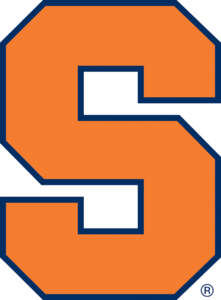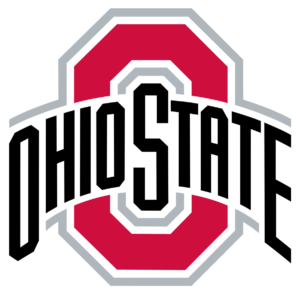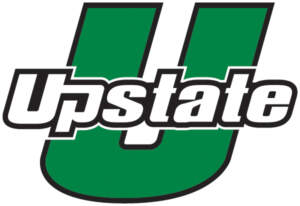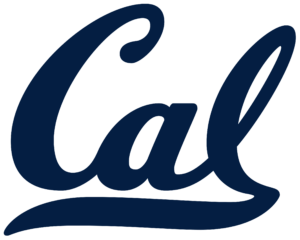NCAA Initial Eligibility Clearinghouse – Clemson Admissions
NCAA Initial Eligibility Clearinghouse – Clemson Admissions
In the-mid 1990’s the NCAA established the NCAA Initial Eligibility Clearinghouse (IEC). To ensure that uniform standards were applied in determining the eligibility of incoming freshman to Division I and II schools. All Division I and Division II schools in the state of South Carolina must have their freshmen cleared by the Clearinghouse.
The Clearinghouse is located in the same building in Iowa City, Iowa that houses the ACT National Testing Agency, but the work of the two agencies are separate. To better understand its function, let’s look at a few key words:
Core Course: Every high school annually submits a list of college-preparatory or “core” courses to the IEC. The NCAA requires successful completion of 13 core course: four in English, two in Math (at Algebra I or higher), two in science (at least one must be a lab science), an additional course from the three sections above, two social sciences and two additional courses such as foreign language. A this time, the NCAA membership is considering an increase of core courses.
Initial Eligibility Index: The NCAA uses a sliding scale to determine freshman eligibility. The overall grade-point-average (GPA) in the core courses is compared to a test score from SAT or ACT. This sliding scale is shown in the table below. At this time, the NCAA membership is considering extending the sliding scale.
Initial Eligibility Index
Core G.P.A. | SAT | Sum ACT |
2.500 and above | 700 | 68 |
2.475 | 710 | 69 |
2.450 | 720 | 70 |
2.400 | 740 | 71 |
2.375 | 750 | 72 |
2.350 | 760 | 73 |
2.325 | 770 | 74 |
2.300 | 780 | 75 |
2.275 | 790 | 76 |
2.250 | 800 | 77 |
2.225 | 810 | 78 |
2.200 | 820 | 79 |
2.175 | 830 | 80 |
2.150 | 840 | 80 |
2.125 | 850 | 81 |
2.100 | 860 | 82 |
2.075 | 870 | 83 |
2.050 | 880 | 84 |
2.025 | 890 | 85 |
2.000 | 900 | 86 |
Qualifier: For Division I, the student is a high school graduate, their test score and core GPA meet or exceed the NCAA index.
Non-Qualifier: For Division I, a student who either did not graduate from high school, or whose core GPA and test scores did not meet the Index. The ACC prohibits its member schools from allowing nonqualifiers to enroll as first-time, full-time students. To be eligible in the ACC, a nonqualifier must graduate from a junior college or attend a four-year school for three semesters. In addition, the nonqualifier must present 48 transferrable hours and at least a 2.0 in transferrable credit.
Partial-Qualifier: For Division I, a student who graduated from high school and did not meet the Index, but fall in a narrow category of SAT/GPA criteria. Partial qualifiers typically have a high core GPA but present SAT or ACT test scores that are below 820 and 68. The ACC limits the number of partials that may enroll each year. Each ACC member is allowed two for men’s sports and two for women’s sports, with no more than one in a given sport. For exceptions to this rule, the member must appeal to the faculty athletic representatives at the nine ACC schools. Since 1998, only six Clemson athletes have entered as a partial qualifier. They are eligible for athletic aid and practice but may not travel or compete with the team.
Core G.P.A. | SAT | Sum ACT |
2.750 and above | 720 | 59 |
2.725 | 730 | 59 |
2.700 | 730 | 60 |
2.675 | 740-750 | 61 |
2.650 | 760 | 62 |
2.625 | 770 | 63 |
2.600 | 780 | 64 |
2.575 | 790 | 65 |
2.550 | 800 | 66 |
2.525 | 810 | 67 |
While the NCAA Clearinghouse certifies eligibility status, it remains the responsibility of the member school to ensure compliance with NCAA Bylaw 14.1.2 Validity of Academic Records. Consequently, we are obligated to ensure the validity of the student’s academic credentials and test scores. Clemson requests that the testing agency review any test results for a potential student that jumps from one test to the next 150 in a single area or 300 overall. Research provided by the testing agencies confirms that less than 1% of the testing population gains 140 points in an area.
NCAA schools also must scrutinize high school and junior college transcripts to confirm valid academic records. Failure to do so could result in a charge of academic fraud. The NCAA Committee on Infractions has dealt seriously with schools that committed academic fraud. For more detail, go to http://www.ncaa.org, click on enforcement, click on major infractions database and enter “academic fraud” in the search area, scroll to “the phrase” in The case must contain… and hit “Go Search”.
If you have questions about this article or compliance issues in general, refer to COMPLIANCE-L@CLEMSON.EDU or call 864-656-1580. Don’t forget to visit our website at http://clemsontigers.fansonly.com/compliance.
 Syracuse
Syracuse 
 Virginia
Virginia  Florida State
Florida State  Wake Forest
Wake Forest  Miami (Fla.)
Miami (Fla.)  Alabama
Alabama  Tennessee
Tennessee  Charlotte
Charlotte  USC Upstate
USC Upstate  Ohio State
Ohio State  Georgia State`
Georgia State`  Ohio University
Ohio University  Indiana
Indiana  Virginia Tech
Virginia Tech  Tiger Classic
Tiger Classic  South Carolina
South Carolina  South Carolina
South Carolina  Campbell
Campbell  UAB
UAB  East Tennessee State
East Tennessee State  LSU
LSU  South Carolina
South Carolina  App State
App State  North Carolina A&T
North Carolina A&T  Charlotte
Charlotte  Pittsburgh
Pittsburgh  Troy
Troy  Georgia
Georgia  Cougar Classic
Cougar Classic  Georgia
Georgia  VCU
VCU  Stanford
Stanford  Elon
Elon  USC Upstate
USC Upstate  Georgia Tech
Georgia Tech  Wofford
Wofford  SMU
SMU  California
California  Queens
Queens  Georgetown
Georgetown  Norfolk State
Norfolk State  Louisville
Louisville  Charleston Southern
Charleston Southern  Mason Rudolph Championship
Mason Rudolph Championship 




